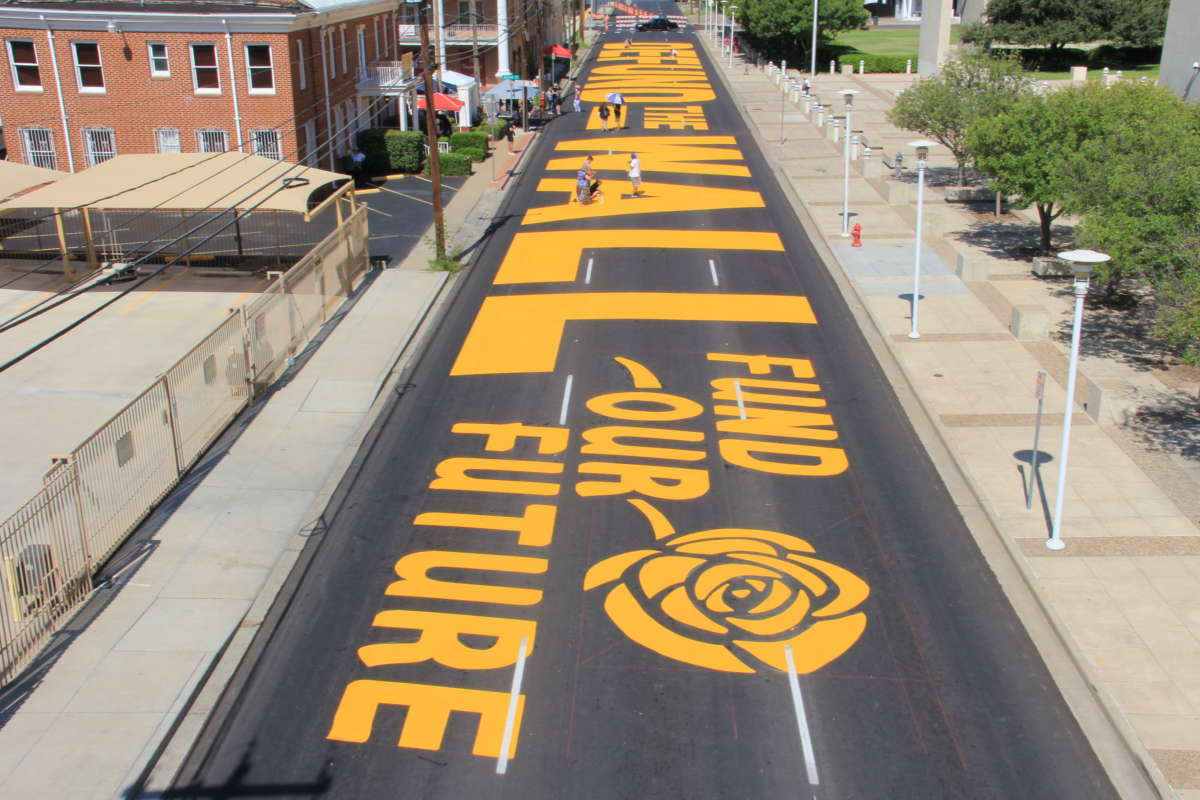Part of the Series
Despair and Disparity: The Uneven Burdens of COVID-19
Support justice-driven, accurate and transparent news — make a quick donation to Truthout today!
Under a sweltering August sun, just blocks from the U.S.-Mexico border, four local activists busily stage-direct the movements of about 100 residents of Laredo, Texas, who are lined up, fists raised, along the street in front of the city’s George P. Kazen federal courthouse.
The four are standing on a 30-foot high scissor lift, making sure the crowd below is placed just perfectly along the giant street mural they have planned for weeks and just finished painting that Sunday morning, August 16. “Don’t move,” they call out as a small drone buzzes above their painstakingly placed message to the White House: “DEFUND THE WALL. FUND OUR FUTURE.”
If U.S. Customs and Border Protection (CBP) completes construction on the area’s two in-process contracts for President Trump’s border wall, the steel bollard fence would stand as high as the scissor lift and completely cut the city off from its waterfront along the Rio Grande River.
The latest contract for the area was awarded to Fisher Industries, a company affiliated with the “We Build the Wall” campaign, whose leaders, including former White House strategist Steve Bannon, were indicted last week on charges of fraud and money laundering.
The wall would not only sever the city from its river; it would also turn many of its neighborhoods into “open-air prisons,” as the activists put it. Residential homes would abut the wall’s accompanying 150-foot enforcement zone, outfitted with surveillance towers, motion sensors and floodlights.
The city’s strategy is to tie the project up in court, delaying land condemnations past the November election in the hopes that a potential President Joe Biden will make good on his pledge to stop a wall that is already underway. Construction on the contracts is set to begin in January 2021.
Now, the No Border Wall Laredo Coalition hopes to heighten the sense of urgency by linking their demands to the larger movement for Black lives and to defund police, both in court and on the street. They’re demonstrating the connection between the systemic, carceral racism of Trump’s “prison wall” and the systemic racism of U.S. policing.
The Coalition is demanding that the $564 million being poured into 31 miles of fencing to stop a manufactured social crisis instead be used to address real crises border residents face: the most dire being the COVID-19 emergency that has taken more than 200 lives in one of the nation’s most severe hot spots. Laredo has become ground zero not only in the fight against the border wall but also the fight against the pandemic.
“The wall certainly is this really strong symbol of racism that is being placed on our necks.”
“The wall certainly is this really strong symbol of racism that is being placed on our necks and being shoved down our throats,” says Tricia Cortez, the executive director of the nonprofit Rio Grande International Study Center, which works to preserve and restore the Rio Grande Basin. “No question what it’s a symbol of, what it represents, because when you go beyond the ideology of it, the logic of it does not make sense, the cost of it does not make sense.”
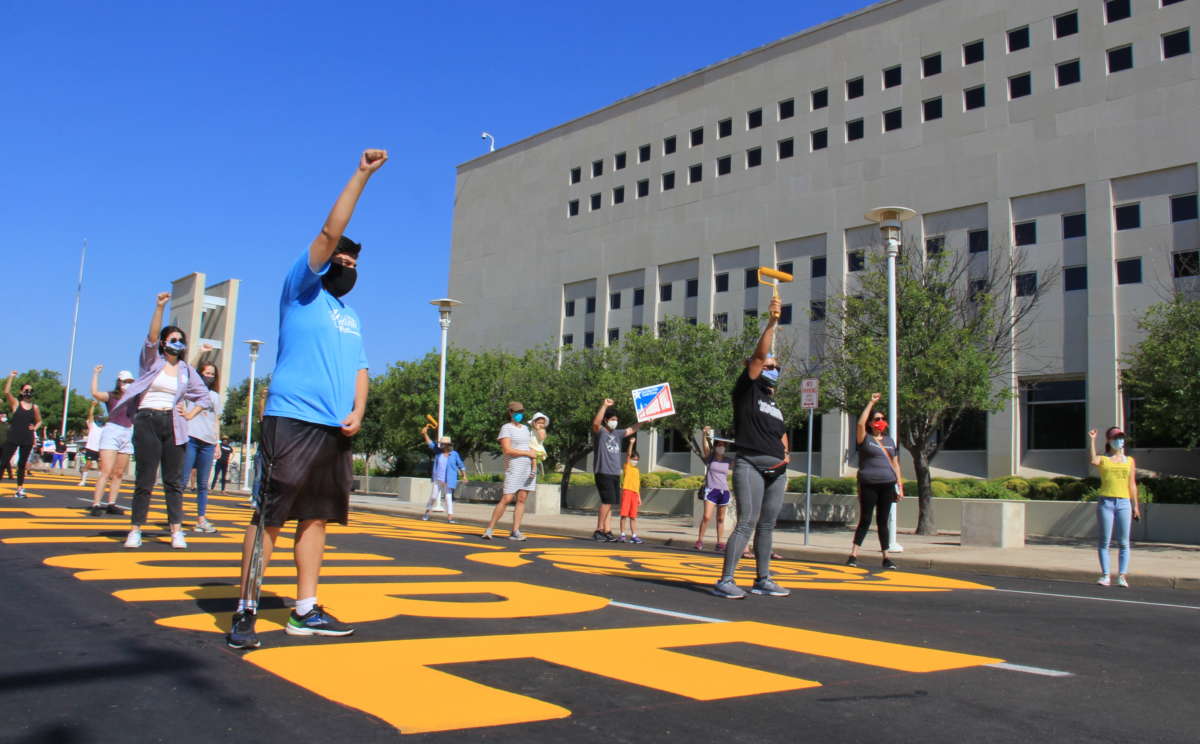
Last month, landowners and Coalition members joined with elected officials in neighboring Zapata County to file a novel court challenge in Laredo’s federal court that also echoes themes from the Black Lives Matter movement. The suit argues that Trump’s border wall is a racially motivated attack on Mexican Americans — a protected class under the U.S. Constitution.
“When you go beyond the ideology of it, the logic of it does not make sense, the cost of it does not make sense.”
The plaintiffs allege that Trump’s racial animus led directly to Department of Homeland Security (DHS) policies that deprive Mexican American citizens along the border of their property and cultural heritage in violation of Fifth Amendment due process guarantees. The suit seeks injunctive relief against federal seizures of private borderlands and construction activities. It also seeks to reinstate at least 27 laws waived by Trump officials to expedite wall construction under the 2005 Real ID Act — many of them crucial environmental protections for sensitive ecological areas.
The plaintiffs claim Trump’s January 25, 2017, executive order to build the wall “creates a second-class United States citizen at the southern border who can have their land seized wholesale based on racist and white nationalist motives.”
The attorney who filed the complaint, Carlos Evaristo Flores, cautions that the Coalition doesn’t precisely equate the movement to stop the wall with the Black Lives Matter (BLM) movement. “We don’t think that seizing the land is the functional equivalent of [anti-Black policing]. But BLM is instructive to us because while the animus toward us is not in the same character or manner of the Black community, we are very close cousins.”
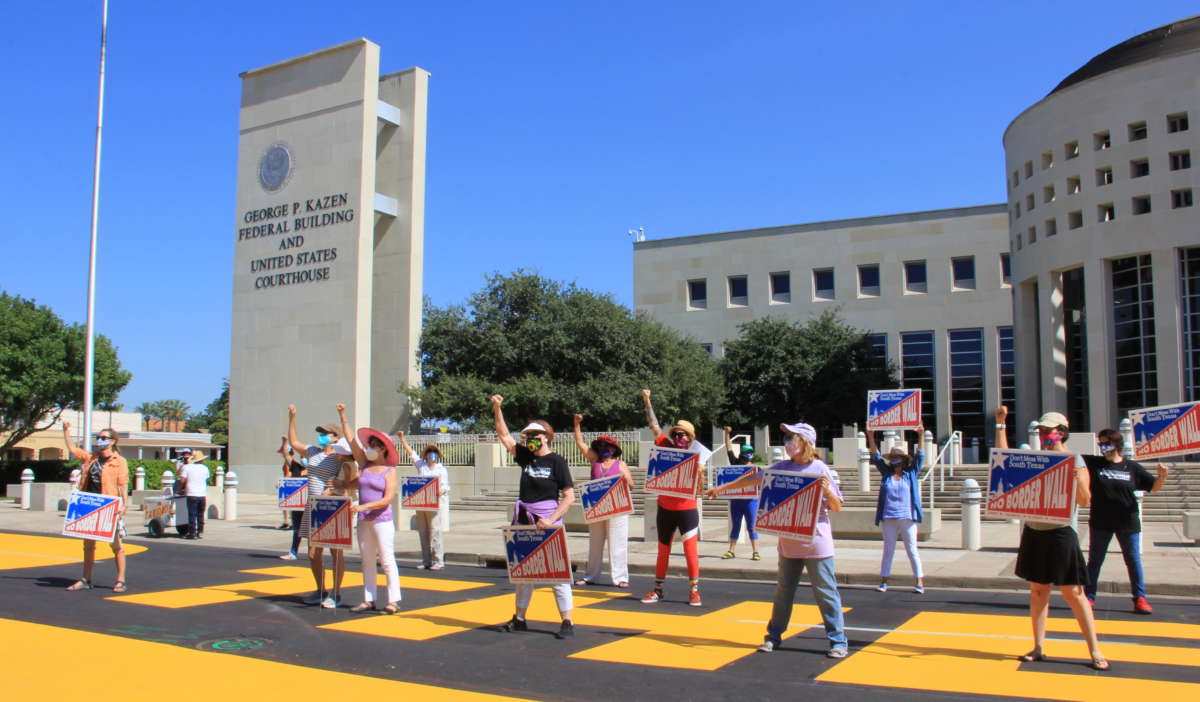
The complaint is also novel in other ways: It’s the only lawsuit in the country challenging the DHS waivers based on the argument that Acting DHS Secretary Chad Wolf didn’t have the authority to issue them in the first place. A recent Government Accountability Office report issued August 14 seems to confirm that argument. The report found that Trump illegally appointed Wolf and Acting Deputy Secretary Ken Cuccinelli to their positions and thus, found them ineligible to serve.
A separate government watchdog report released last month could likewise bolster the lawsuit’s argument. The DHS Inspector General’s Office found that CBP failed to sufficiently justify the need for a border wall. The report said the agency failed to conduct an analysis of alternatives to determine whether the wall was “the most effective, appropriate, and affordable” solution to “obtain operational control of the southern border” as directed in Trump’s executive order.
“While the animus toward us is not in the same character or manner of the Black community, we are very close cousins.”
Instead, the report found that CBP rushed to approve wall construction, relying on “outdated border solutions to identify material alternatives for meeting its mission requirement.” The Inspector General’s Office also found that “CBP has not fully demonstrated that it possesses the capability to potentially spend billions of dollars to execute a large-scale acquisition to secure the southern border.”
Evaristo Flores says the DHS report is a boon to the case because, under the strict scrutiny standard of constitutional law, the government has to show that it has a “narrowly tailored” governmental interest to achieve its purpose and has used the least restrictive means necessary to do so. The report shows, however, that CBP didn’t even study the least-restrictive alternatives to achieve its purpose.
DHS has until September 15 to file a response to the complaint.
Land Theft for White Nationalism
Melissa Cigarroa, board president of the Rio Grande International Study Center, is one of the Mexican-American plaintiffs whose land is being seized for Trump’s racist and white nationalist motives, as her suit argues.
After the Coalition’s mural shoot on Sunday, I meet up with her in the afternoon, right as temperatures reach their triple-digit high of 103. We climb into her son’s Ford pickup and head south into Zapata County, toward her 175-acre ranch along the Rio Grande.
We slowly drive along a loose silt road checkered with sinkholes — recent erosion from flash flooding. A feral hog darts across our path. We stop again briefly for a glimpse of a roadrunner. Cigarroa pulls over, and we hike up a scenic cliff offering a breathtaking riverside vista of Mexico’s rolling hills. A wake of vultures circles above the meandering river. We both assume the animal below must have died of heat exhaustion as the sun beats down on us.
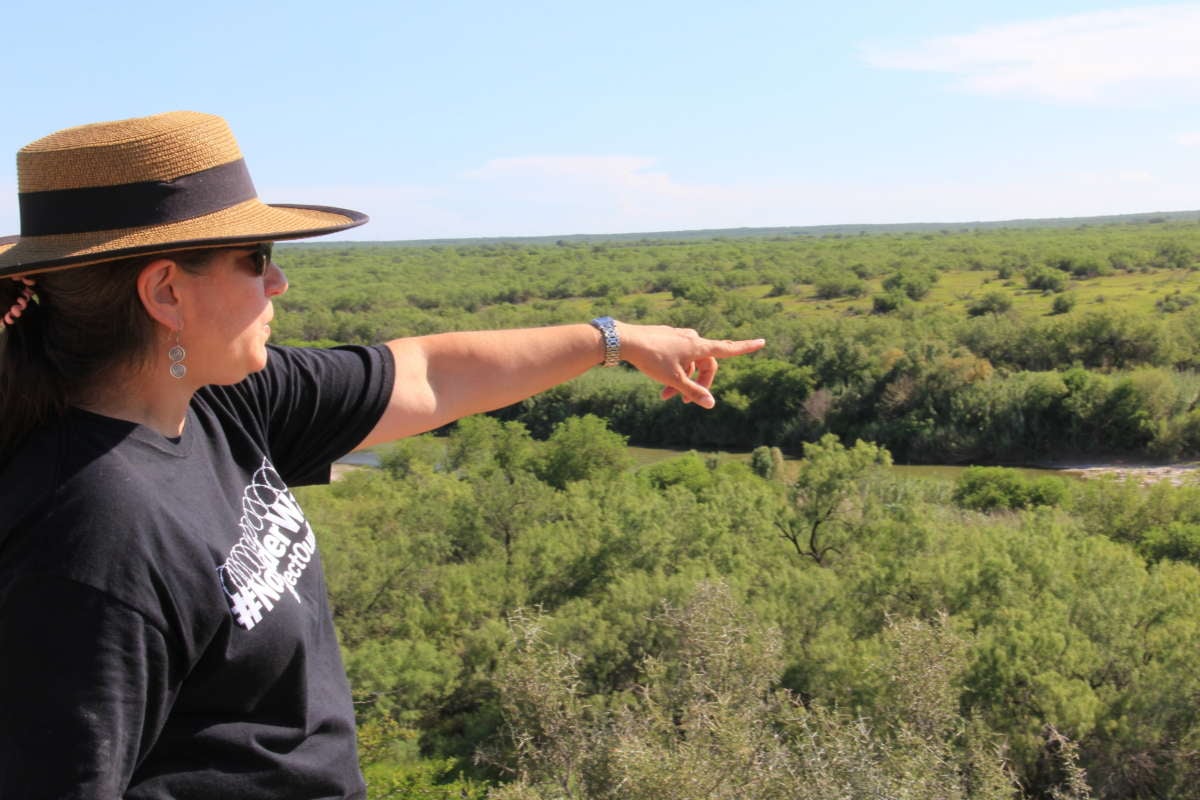
Cigarroa leads me back down toward the riverbank, pointing out fossilized oyster shells along the way. At the river’s edge, she shows me the hundreds-of-years-old mesquite that would be obliterated for Trump’s wall. The silt is much looser here. She doesn’t know how the wall will be able to withstand the constant erosion. CBP wants access to the entirety of her land for their right of entry. They want 1,800 linear feet of river frontage along a 250-foot-wide swath for the wall itself.
CBP isn’t just planning to build in the flood plain on Cigarroa’s land; the agency’s plan would increase the chances of flooding all along the city’s riverfront. The government won’t be able to build on top of dikes, since the city doesn’t have levees. It must wall off the city right up to the bank, or literally route the wall through neighborhoods.
“Those Real ID waivers shouldn’t exist. We do not live in a country that has Constitution-free zones.”
In Mexico and Arizona, debris has gotten caught behind the six-inch bollards during flash floods, turning the fence into a makeshift dam. If that happens in Laredo, it could send floodwaters south toward residents of Nuevo Laredo, Mexico, just across the border, potentially violating international treaty obligations. To make matters worse, the government is considering building a bulkhead wall for a one-mile stretch near downtown. The concrete levee structure could exacerbate the chances of flooding even more.
In February, Cigarroa attended a Zapata County landowners meeting with the Department of Justice (DOJ) and the Army Corps of Engineers. She was deeply offended by what she called DOJ attorney Paxton Warner’s blatant dismissal of the cultural heritage and history of those who have owned land along the river for generations.
Warner, who oversaw wall construction under the Bush administration, told the landowners during the meeting that, “There were a lot of unhappy people back in 2008, 2009 down in the Rio Grande Valley [when the wall] came through,” according to a recording of the meeting first obtained by the Texas Observer. “People learn to live with it.”
Cigarroa is not simply going to live with it, though. “It’s easy to get caught up in the inanity of it and kind of try to figure out where your rights are because at the outset they tell you, ‘Well, with eminent domain you really don’t have any rights,’ and that’s wrong,” she says. “Those Real ID waivers shouldn’t exist. We do not live in a country that has Constitution-free zones. Eminent domain requires a public purpose.”
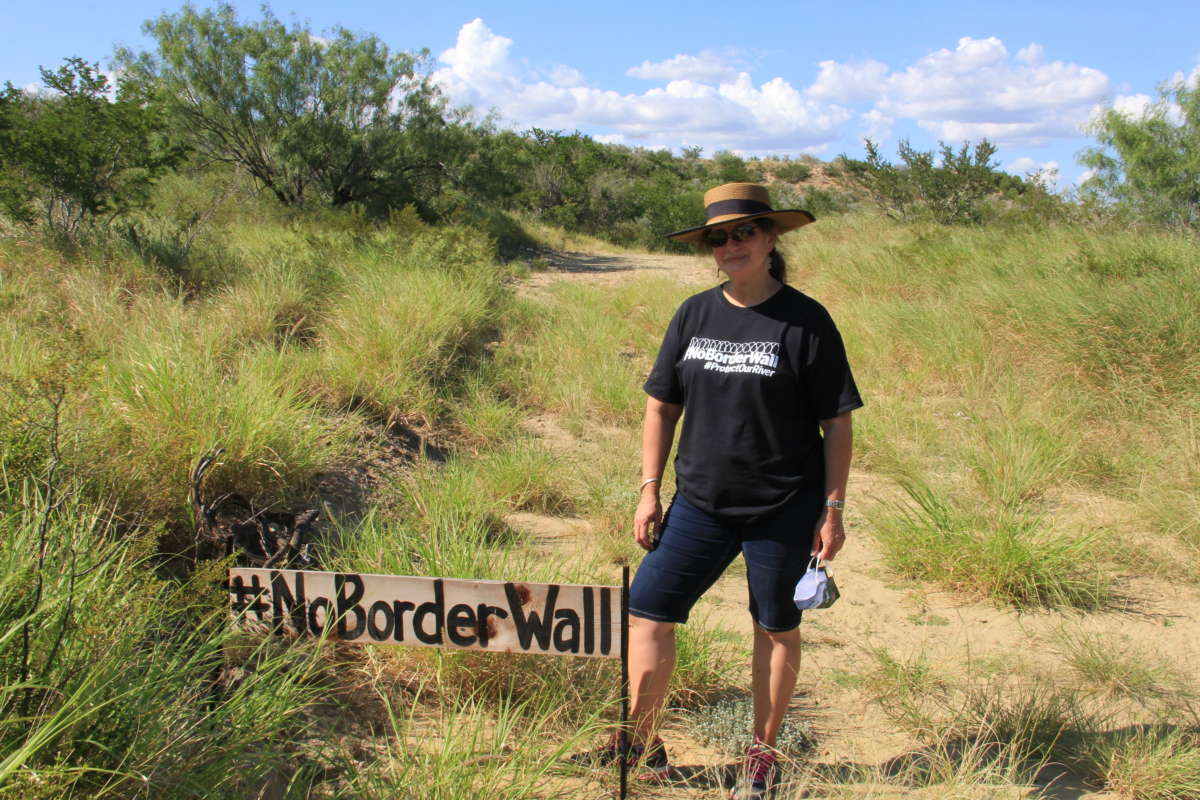
She refused to sign CBP’s right-of-entry form after months of negotiations, and CBP has taken her to court in the first round of condemnation hearings. She is still awaiting the court’s response to the government’s offer as her Fifth Amendment case pends.
“When this movement came out to defund the police, specifically to ask society to stop pouring in so much money for this false narrative of militarizing our cities even more, that is what our message is too.”
Like her attorney, Evaristo Flores, Cigarroa underscored that the government’s seizure of her land isn’t the same as police-perpetrated violence against Black people in the U.S. Still, she says, “The animus that emanates from the White House, … it is [toward] all communities of color. So when this movement came out to defund the police, specifically to ask society to stop pouring in so much money for this false narrative of living in fear and militarizing our cities even more, that is what our message is too.”
In a city that is 95 percent Latiné and nearly 30 percent below the poverty line, the Coalition is demanding resources for education, housing, environmental restoration, economic development and health care as its residents struggle with one of the most severe outbreaks of COVID-19 in the nation.
Wall Accelerates Amid Pandemic
Laredo is among the five metropolitan areas with the highest rates of new COVID-19 cases relative to their populations in the U.S., according to data compiled by The New York Times. All five areas are in South Texas. Laredo, a city of 260,000, broke 10,000 positive cases on Thursday.
The city is also experiencing one of the highest death rates per capita in the country, with 227 pandemic-related deaths as of August 24. Laredo’s three hospitals have been at or near capacity every day, and its five nursing homes have had 40 virus-related deaths alone. It was the first city in the nation to pass an ordinance mandating masks in public.
“We got money and we’re grateful for it, but we didn’t get near the type of money that we should be getting.”
Border cities are uniquely susceptible to the pandemic as centers of transit and commerce, facilitating visitors not just from Mexico but across the U.S.; Laredo in particular is the top trade hub in the country. During the onset of the pandemic in March, about $20 billion in goods entered through its port.
Mercurio Martinez III, a Laredo city council member whose family originally owned Cigarroa’s ranch and has owned land along the river for generations, told Truthout the city has received more than $1 million in aid from the federal CARES Act, which it had to apply for from the state since the city’s population is below 500,000.
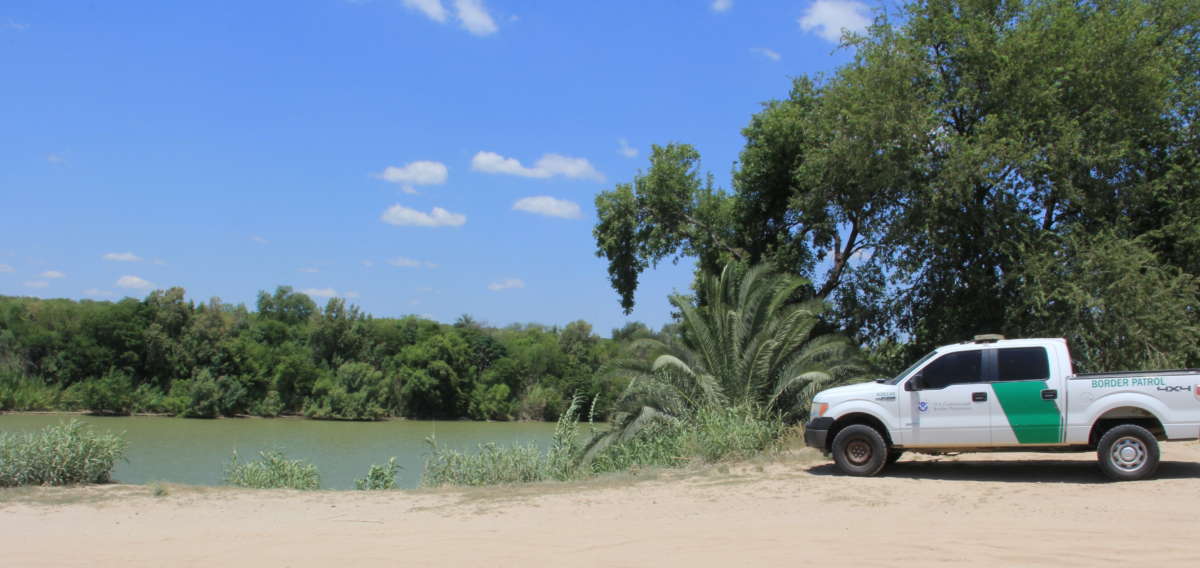
In Texas, the governor’s office has dispersed the aid money at a lower rate than the federal government, leaving some of the hardest hit border cities holding the bag. Gov. Greg Abbott distributed the funds to Laredo “in a fashion that didn’t benefit us,” Martinez says. “We got money and we’re grateful for it, but we didn’t get near the type of money that we should be getting.”
The state turned a local Red Roof Inn into a 106-bed temporary hospital for COVID-19 patients with mild cases, but Martinez and other local leaders have been urging state officials to allow patients with more serious cases in, to no avail.
“The pandemic came in, and everybody’s focused changed. The president’s focus didn’t change.”
The Coalition points out that Webb County, where Laredo is located, has been designated as a Health Professional Shortage Area for primary care physicians since December 2019, while Laredo lacks a major trauma center. More than 30 percent of the city’s residents likewise lack any kind of health insurance. Because of this, many wait until their cases become life threatening to visit local emergency rooms, trying to avoid the burden that crushing medical bills will have on their families.
Martinez says the city’s hospitals have moved resources around to convert certain floors into temporary intensive care units. As the city’s cases continue to climb, he says council members are eyeing potentially converting Laredo’s migrant jail into a temporary medical facility.
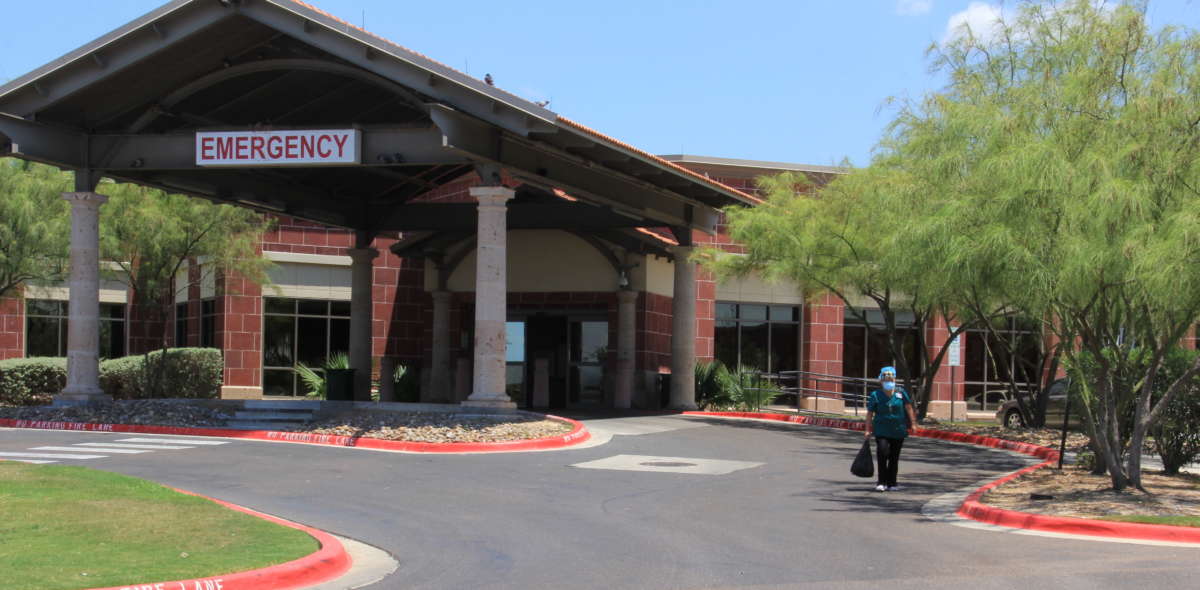
While border cities and their residents have their hands full with spiking cases, the Trump administration is pushing the wall through: The DOJ has ramped up lawsuits against landowners in South Texas, filing 64 eminent domain lawsuits this year in the state’s southern district court — 41 since April.
“Instead of ‘Let’s talk about the wall and the funding of it,’ the cities are trying to battle a disease that we can’t see.”
“The pandemic came in, and everybody’s focused changed. The president’s focus didn’t change. He still wanted to go through with [the wall], but instead of ‘Let’s talk about the wall and the funding of it,’ the cities are trying to battle a disease that we can’t see,” Martinez says. “So our focus changed, and the White House’s focus just continued.”
Activists say the immense resources being funneled into the wall should be redirected to the city’s outbreak. According to a Truthout analysis, the amount of funding it takes to build about 1.6 miles of wall could provide each of the 10,130 Laredoans who have tested positive for COVID as of August 24 with a five-day treatment of Remdesivir, the antiviral drug that has helped many COVID patients recover.
Betting on Biden
To fulfill his campaign promise, Trump must build 450 miles of border wall by the end of 2020. According to CBP, the Trump administration has built at least 275 miles of fencing, nearly 90 percent of which has replaced shorter barriers erected under George W. Bush.
Trump has corralled $15 billion in federal funds for his wall, including $5 billion provided by Congress. He has siphoned the rest from Pentagon accounts, including a $2.5 billion transfer last year that the U.S. Court of Appeals for the 9th Circuit ruled unlawful in June. Now, Trump is asking for an additional $2 billion in his 2021 proposed budget.
“November is going to be critical. It’s going to determine what we’re going to do and our strategy,” the International Study Center’s Cortez says. “Democrats have a reckoning to go through themselves to really understanding the impacts of their votes and how they direct congressional funding.”
“Democrats have a reckoning to go through themselves to really understanding the impacts of their votes and how they direct congressional funding.”
Laredo Rep. Henry Cuellar’s political evolution on the wall has been heartening for the Coalition. Cuellar, who is vice chairman of the House Appropriations Subcommittee on Homeland Security, twice voted to fund Trump’s signature project before backing his constituents and voting against funding for the wall last year.
He has added language to multiple fiscal year 2021 congressional appropriations bills passed in the House that would prohibit new federal funding for wall construction; prevent Trump from tapping into Pentagon accounts for additional funds; and block construction on historical, cultural and environmentally sensitive sites in South Texas.
Cuellar and Democratic presidential nominee Joe Biden favor a “smart wall” instead of a physical barrier along the southern border. The technological approach would increase the use of surveillance drones, infrared cameras and motion-detecting radar to snatch undocumented immigrants, to the horror of many privacy and civil liberties proponents. In fact, the House has already approved $55 million for new border surveillance technologies, but the Republican-led Senate has yet to vote on any 2021 budget measures.
“Today it’s us, but tomorrow it could be you in your part of the country.”
As a senator, Biden voted for the Secure Fence Act in 2006, which ultimately built more than 600 miles of wall along the border. If he’s elected in November and makes good on recent campaign statements, though, his presidency would represent a significant departure from his previous voting record and from that of the Obama administration, which oversaw the completion of former President George W. Bush’s border wall after taking office in 2009.
Biden told The Dallas Morning News this month that while he wouldn’t dismantle segments of existing fence along the border, he would stop future construction if he’s elected, saying, “There will not be another foot of wall construction in my administration.” He also said he would dismiss pending condemnation cases against landowners, telling reporters, “End. Stop. Done. Over. Not going to do it. Withdraw the lawsuits. We’re out. We’re not going to confiscate the land.”
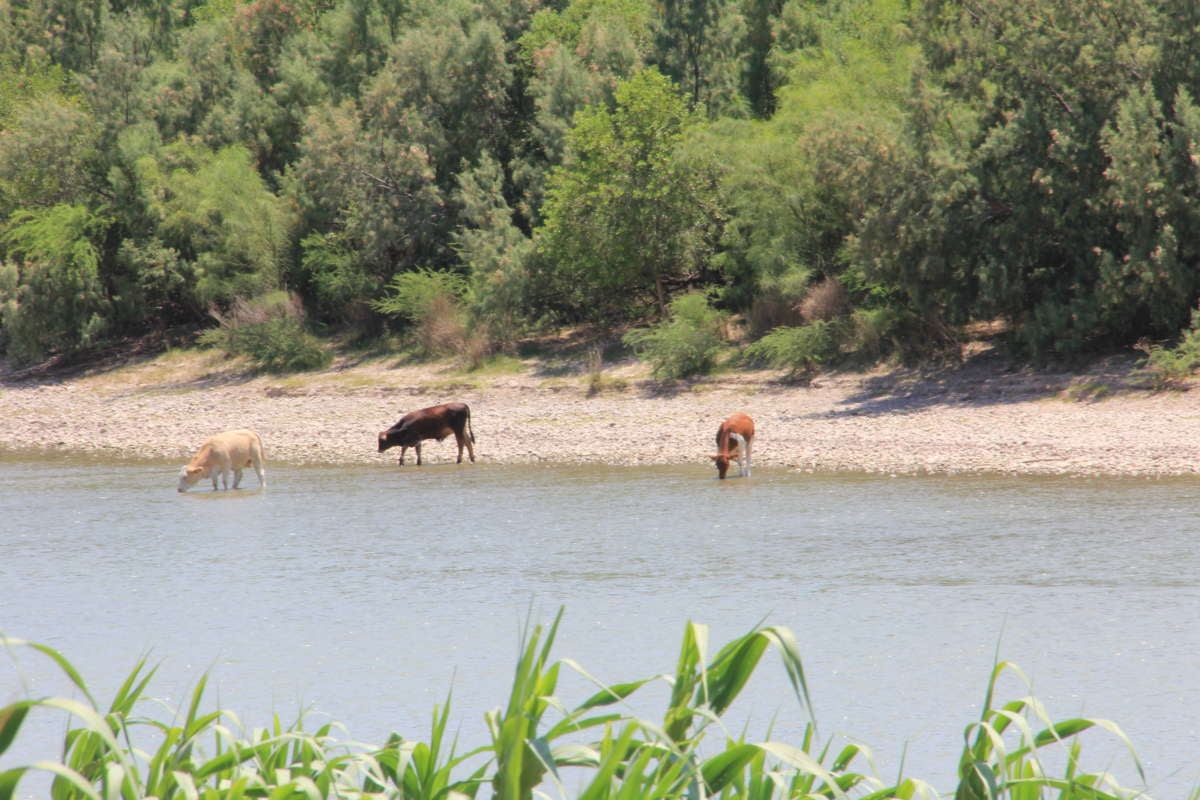
Biden has also pledged to end Trump’s declaration of emergency at the border and end other key Trump initiatives on immigration, including the Remain in Mexico program. For anti-wall activists in Laredo, every day they can delay Trump’s prison wall in hopes of ultimately stopping the government from pouring billions more into the president’s monument to systemic racism, is a victory.
“We’re on the front lines of these really extremist world views, and people in the United States have to know that if we don’t stop that, today it’s us, but tomorrow it could be you in your part of the country,” Cortez says. “So that’s why we take a stand here.”
Media that fights fascism
Truthout is funded almost entirely by readers — that’s why we can speak truth to power and cut against the mainstream narrative. But independent journalists at Truthout face mounting political repression under Trump.
We rely on your support to survive McCarthyist censorship. Please make a tax-deductible one-time or monthly donation.
